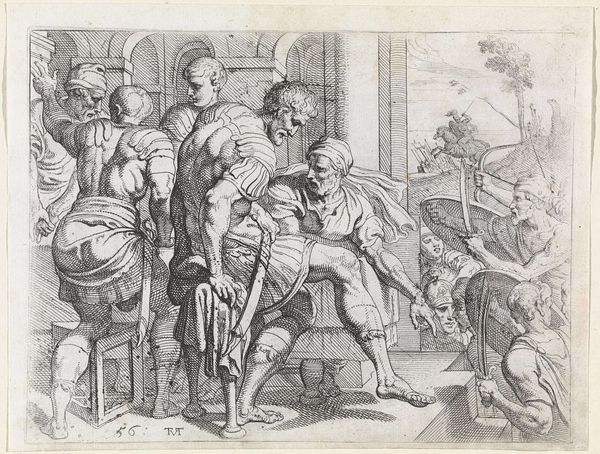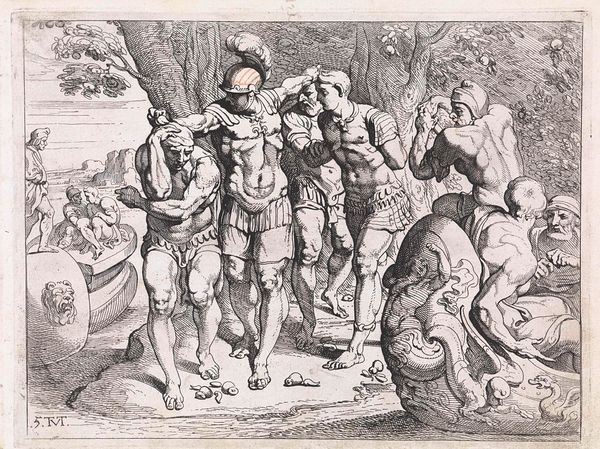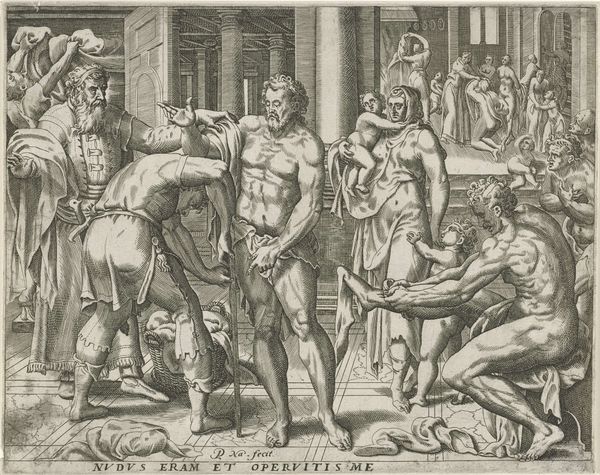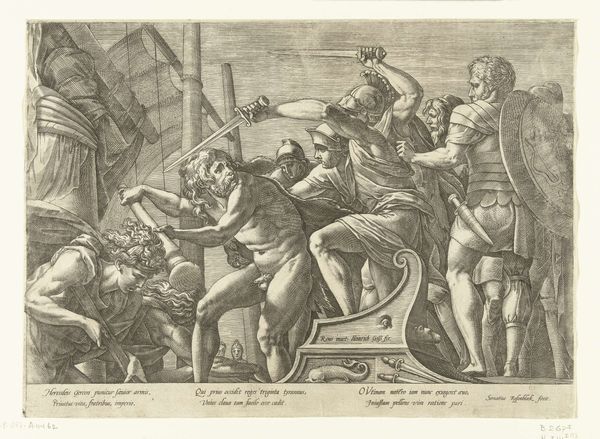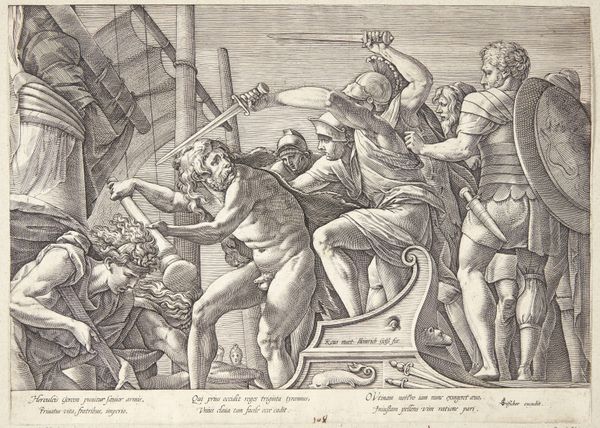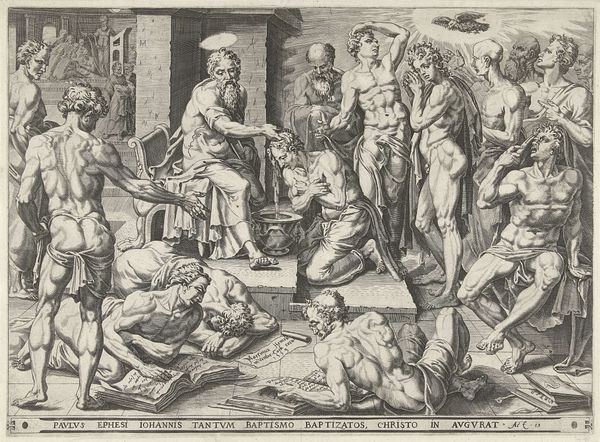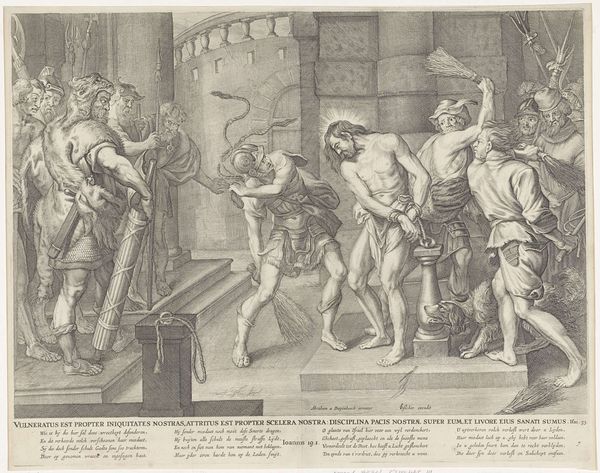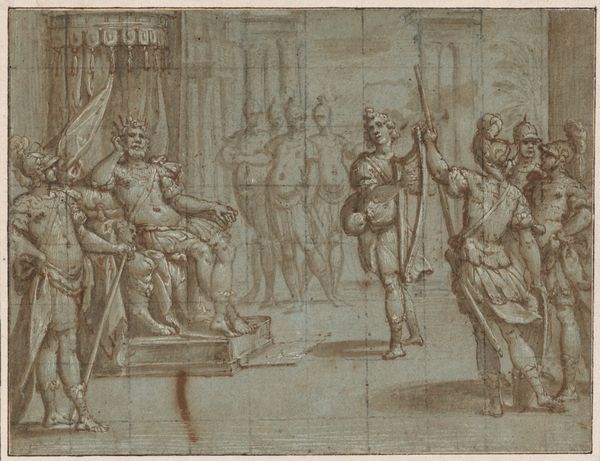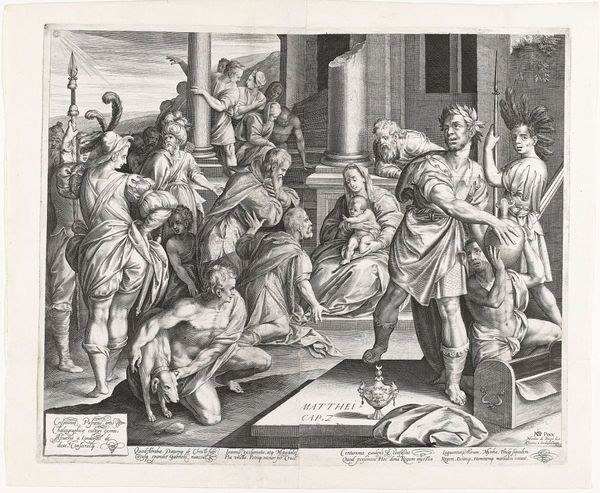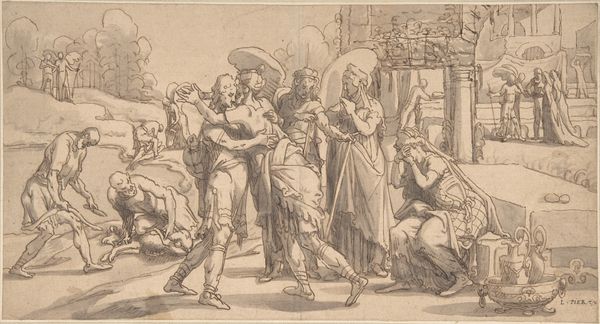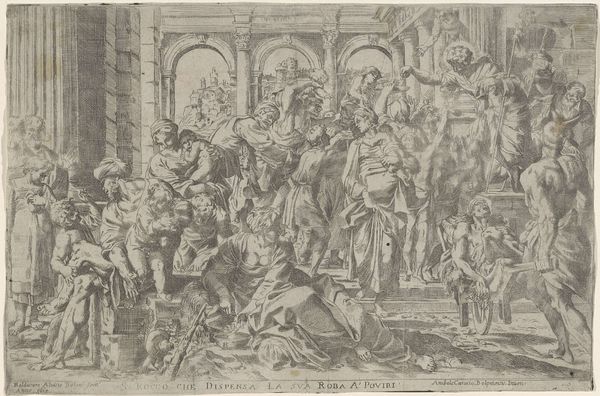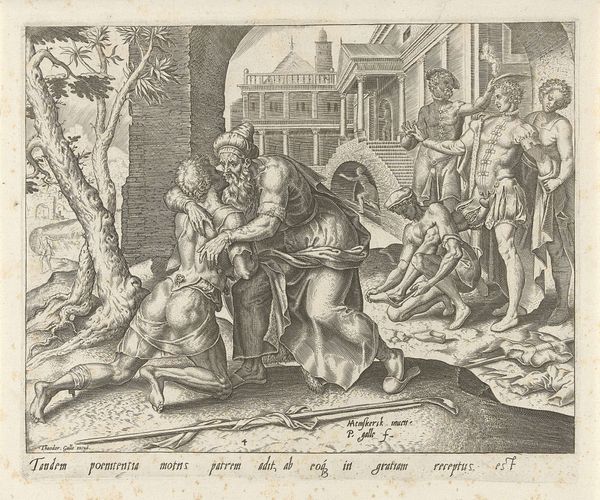
print, engraving
#
narrative-art
#
baroque
# print
#
figuration
#
history-painting
#
engraving
Dimensions: height 196 mm, width 272 mm
Copyright: Rijks Museum: Open Domain
Editor: This is "Reconciliation between Ulysses and the Ithacan rebels," an engraving by Theodoor van Thulden, dating from around 1632-1633. The composition strikes me as chaotic, yet it seems intended to represent the re-establishment of order. How do you interpret the dynamics at play here? Curator: A key element here is understanding the political function prints held during this period. Consider the Thirty Years’ War – this print isn't just depicting a scene from Homer; it's about contemporary power, negotiation, and ultimately, the suppression of internal dissent. Ulysses’s return is framed as the restoration of legitimate authority after rebellion. Notice how he is represented: as a figure of strength and legitimacy in armour. Who benefits from a political message of this nature and who is the target? Editor: I hadn’t thought about it like that. So the hugging figures in the foreground aren’t necessarily genuine reconciliation, but a display… or a forced compliance? Curator: Precisely. Think about the role imagery played in solidifying power during this time. Engravings like these circulated widely, shaping public perception. How does Van Thulden position Ulysses vis-à-vis the rebels, in terms of physical presence and posture? The visual hierarchy reinforces a clear message. What impact could repetitive visuals have? Editor: He stands taller, more regal… intimidating even. And the rebels are literally bowing to him. It really reframes my understanding. This is less about forgiveness, more about… public submission? Curator: Exactly. It serves as a very public object lesson, and reflects how rulers often co-opt classical stories to reinforce existing social orders and assert power. Understanding that contextual undercurrent changes how we "read" the image itself, doesn’t it? Editor: Absolutely. It transforms from what looked like a straightforward depiction of a happy ending into something much more complex, politically charged, and calculated. Thank you, it opens up so many other questions about imagery, governance, and authority.
Comments
No comments
Be the first to comment and join the conversation on the ultimate creative platform.
